After the first and before the second. France between the world wars
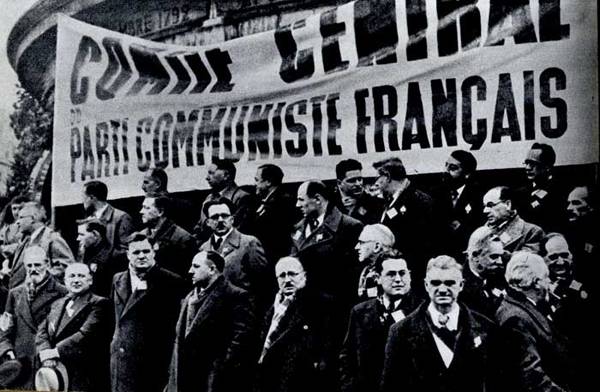
France in 1919–1939
- I heard that expression a long time ago. Why did this happen to a great world power, to a victorious power?
In this article, I will try to consider both the foreign and domestic policy of France, from 1919 to 1939, while forgetting June 1940 - the year of a shameful military defeat and subsequent capitulation. I will try not to dwell on the details of events, but will try to find the causes of this tragedy, which led France from the Victory Parade on the Champs Elysees on July 14, 1919 to the same Victory Parade on the same avenue on June 14, 1940. But already the Wehrmacht ...

June 14, 1940. Wehrmacht parade in Paris
Start over
France, along with its allies in the Entente - Great Britain and the United States, emerged victorious from the First World War, but it was exhausted. Both in the east and in the northeast, and these are the most developed areas, the country was devastated - its losses in this war were greater than those of other allied nations - 1,4 million deaths and 700 veterans left disabled for life.
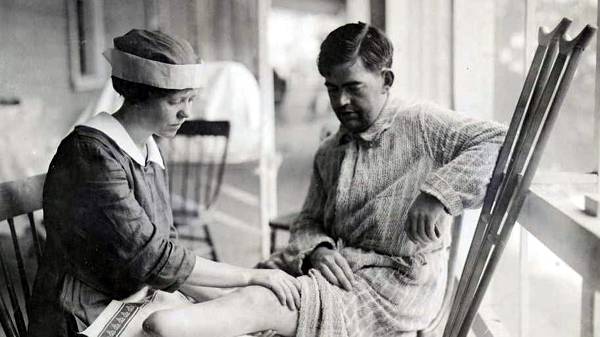
French invalid
A tenth of the country lay in ruins, the factories and mines that represented the economic power of France were destroyed, and agricultural farms turned into a wilderness. Added to this was the high death rate of the civilian population and the loss of half of the commercial fleet.

French city ruins
About 150 billion francs were spent on the war, plus 14 billion francs invested by French citizens in Russia was lost after the Bolshevik revolution. In addition, over the years of the war, the amount of paper money increased five times, and the French economy suffered serious losses - about 20% of the total national wealth.

French city ruins
The demographic situation was also difficult for the French. The proportion of men called up for military service in France at the age of 19-49 was 80%. At the same time, during the war, the French infantry lost 22% of its combat strength - young and healthy men, and the largest losses, about 30%, were suffered by the youngest age group of soldiers 18-25 years old. At the same time, for every thousand called up, 168 were killed, that is, for every thousand young men aged 19-49, France lost 133 people, and if we count the losses for every thousand of all inhabitants of France, then the figure will approach 34.
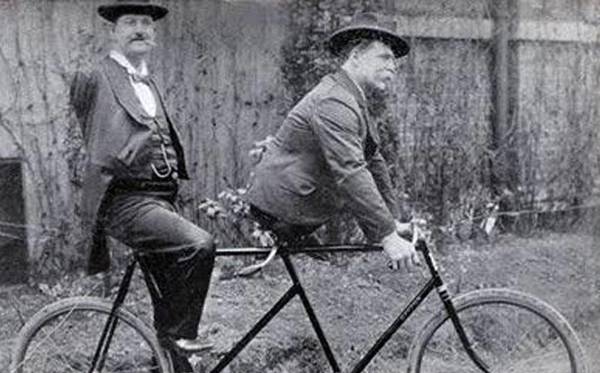
French invalids of the war on a bicycle
Many of the dead men did not have time to start a family, and young French women were never able to get married. More than 600 French women were left widows, and some of the maimed French, returning from the front, lived in homes for the disabled or in villages specially built for them.
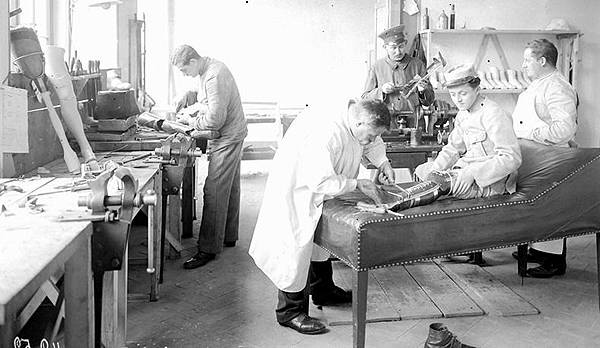
Orthopedic workshop for war invalids in France
In the early 20s, there were fifty-five women for every forty-five French men in their 20s and 30s. There were even years when there were no men from 19 to 30 years old at all - they simply did not have time to be born due to the fact that their future fathers were sitting in the trenches ...
And, of course, such hardships endured demanded from the people of France the determination to put their country on at least a pre-war track, in addition, the government had a growing expectation that France would begin to receive a lot of money as reparations from Germany. And so the news of the victorious end of the war caused general euphoria in the country ...
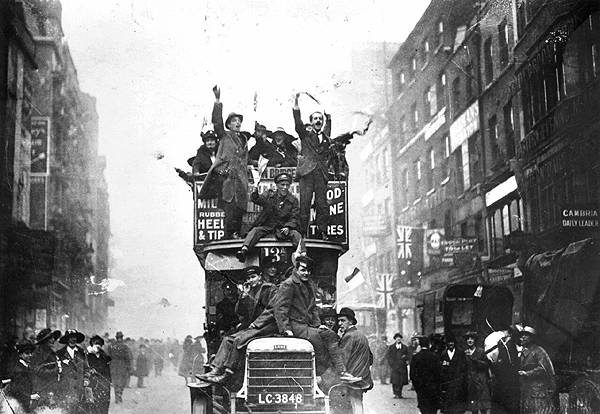
Celebrating the end of the First World War. France
Therefore, immediately after the end of the World War of 1914-1918, the problem of security found itself at the center of the political life of all France. All parties and political forces pinned their hopes in its solution on a peace treaty with Germany, the creation of the League of Nations, the preservation of the alliance with Great Britain and the United States, the expansion of the zone of strategic priorities in Central and South-Eastern Europe, and the active use of the resources of the colonies.

First meeting of the League of Nations
After the end of the war, as a result of the Paris Peace Conference, France received back Alsace and Lorraine, the coal mines of the Saar and, additionally, Syria and Lebanon, taken back from it during the Franco-Prussian War (1870-1871), and in Africa - the former German colonies of Cameroon and Togo. The French delegation insisted on the dismemberment of Germany in order to forever deprive her of the opportunity to threaten France. However, her allies in the Entente opposed this demand with a united front - the dominance of France in continental Europe was not part of their plans.

Paris Peace Conference
The winner fears the hegemony of the loser. Fear of victory
Defeated Germany, with its population of 65 million people, which did not know foreign invasion, freed from the rule of the Hohenzollern monarchy, was strong in its industry, producing twice as much as its primordial enemy - France. Although Germany lost several of its provinces as a result of Versailles, all these French, Polish and Danish lost ethnic minorities were still sources of headache and ethnic conflict for her.

Germany after the end of World War I
Germany's actual severe post-war losses were in the coal resources of Lorraine and Silesia and in its overseas investments, which were confiscated by the victorious nations. As for the geopolitical encirclement of Germany, it has changed for the better - in the east, the newly created Poland replaced the collapsed Russian Empire, and in the south, after the collapse of Austria-Hungary, fragile states were formed, the same as the old Habsburg empire.

Krupp factories in Germany
In other words, in 1919, the geopolitical position of Germany indicated that the only power that could exercise its hegemony in Europe was Germany, even if defeated on the battlefield! The French, being centuries-old neighbors with the Germans, understood this, but the British and Americans refused their proposed solution, that is, the fragmentation of Germany into several states. And in this context, starting from G. Stresemann and ending with A. Hitler, the goal of Germany's foreign policy remained unchanged: to give its country a role in Europe commensurate with its power.

Steelworks in Essen
Hence the tragedy of French foreign policy from 1919 to 1939. The winner of the greatest war of all time - France, paradoxically, is guided by fears, because it is aware of its internal weakness. This fear requires the full implementation of the Treaty of Versailles, the occupation of the Ruhr in 1923 and the rejection of the disarmament requested by the Americans and the British.

Franco-Belgian occupation of the Ruhr
France, during the peace treaty negotiations, tried with all her might to obtain guarantees of her security. For example, Prime Minister J. Clemenceau renounced his claim to the annexation of the Rhineland in exchange for an alliance with the United States and Great Britain, but the refusal of the US Congress to ratify this treaty left France isolated, left with no choice but to cling to full implementation of the Treaty of Versailles and build alliances with the new states of Eastern Europe - Poland, Czechoslovakia, Yugoslavia and Romania.

Ruhr coal basin. Germany
British look
Unlike France, which fought the war with a firm conviction to defend its territory and its existence, Great Britain after 1919, frightened by the great loss of life suffered by it in the First World War, harbors doubts about its decision to enter the war, taken in August 1914. Some argue that she was dragged into a war that was not necessary due to the continental system of alliances in which she should not have been involved. In this context, the Protestant ethic of transparency and sincerity resonates deeply in British public opinion.
And only in 1938-1939, when the smell of war strongly in Europe, did the British public begin to wake up from this stubborn unwillingness to see the German danger.
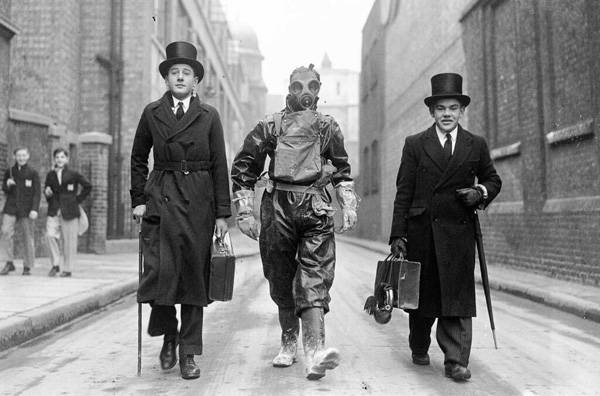
Moreover, after the end of the Great War in 1919, the British diplomatic tradition began to recover, prescribing that no continental power should have hegemony. The only risk to Britain is France, with her victorious army occupying the left bank of the Rhine, and her satellite allies in Eastern and Central Europe.

The fact is that in 1920 the instinct of British diplomacy leads London to seek to limit the power of France. This reflex, which is the result of two centuries stories, exacerbated by the ambiguous feelings aroused in Britain by the Treaty of Versailles, which would have been too tough for Germany and which, one way or another, was doomed to revision.
The British view was biased and blind to the devastation suffered by France, but it was also factually wrong, as was proved by the rapid growth of the German economy after 1924, the impact of which was enormous. From an aggressor, Germany began to turn into a victim, and France was seen as an executioner, tormenting Germany.
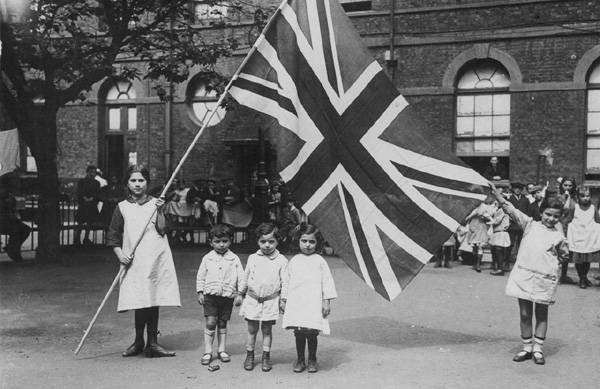
The speed with which the British elite, out of regret or even remorse for having been dragged into this war, out of fear of a possible victory for Bolshevism in Germany, and out of prejudice against France, was ready to consider the Treaty of Versailles unjust.
Although the Franco-British agreement weathered storms from 1919 to 1932, it still stood. Each side was convinced that the other needed it to ensure security and stability in Europe.
Neighboring Italy
B. Mussolini dreamed of building a great "Italian Empire", the cornerstone of which was to be Ethiopia. He believed that France had given him carte blanche during the negotiation of a bilateral agreement of January 7, 1935, which settled the colonial disputes between the two countries. He noted that Britain had always shied away from answering this question, so on October 2, 1935, he attacked Ethiopia. This demonstrative aggression embarrassed London and Paris, who had to face the wrath of their publics at such a blatant case of a cruel and unjustified attack on a member of the League of Nations.

Ethiopian warriors
But none of the allied countries wanted to alienate a country that could threaten communications for Britain, and for the French was seen as a potential ally against the growing strength of Germany. In any case, in retrospect this gap seems inevitable: after Ethiopia came Spain (July 18, 1936).
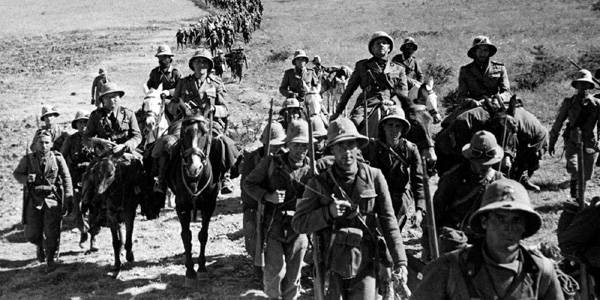
Italian soldiers in Ethiopia
On December 22, 1938, Count G. Ciano, Italian Foreign Minister, notified France that Italy considered the treaty of January 7, 1935, by which conflicting colonial and maritime claims between Italy and France were settled, null and void.
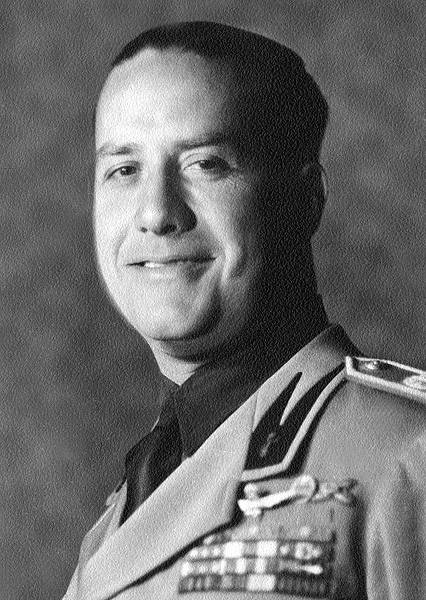
Count G. Ciano - Minister of Foreign Affairs of Italy
It should be noted that in the Italian parliament, some hotheads even demanded Corsica and the Cote d'Azur. Under these circumstances, on January 1, 1939, Prime Minister E. Daladier went with an inspection of defense enterprises to Corsica and African possessions, upon returning from where he stated:
Relations with the USSR
In May 1935, France concluded a mutual assistance pact with the Soviet Union. This treaty provided that in the event of a threat or danger of aggression from any European state to France or the Soviet Union, the USSR and France would begin immediate consultations on the measures to be taken. In the event that France or the Soviet Union were subjected to unprovoked aggression by any European state, both France and the Soviet Union were to immediately come to each other's aid.
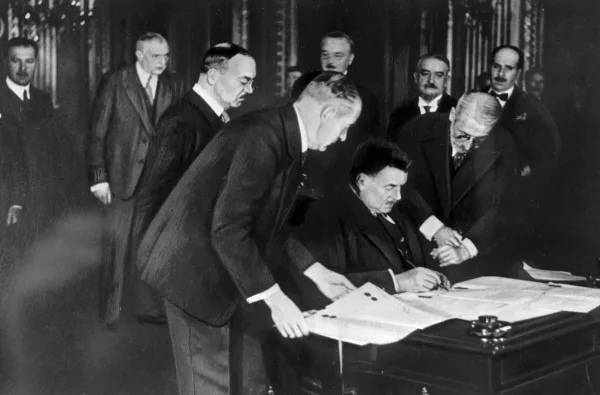
Signing of the Soviet-French pact
But the newly formed Laval government made the activation of the Franco-Soviet pact, concluded earlier, conditional on the consent of other guarantor powers and in July 1935 refused to respond to the Soviet proposal for negotiations between military headquarters. The Soviet-French pact lost all political and military significance. Anti-communism won in Paris.
Looking ahead, we can say that geography made a military agreement difficult, if not impossible, which was proved in the spring of 1939, when neither Poland nor Romania wanted to open their territory to the Soviet troops, who, therefore, could not no way to protect Czechoslovakia.
French foreign policy
From 1919 to 1932, France pursued two seemingly antagonistic policies in succession: the first until 1924 was based on the strict implementation of all post-war treaties that led to the Franco-Belgian occupation of the Ruhr in January 1923, despite the opposition of London. And the second policy was based on the reintegration of Germany into the European mainstream.

Franco-Belgian occupation of the Ruhr
In fact, the Ruhr crisis of 1923 showed the Germans that frontal resistance to the Treaty of Versailles was expensive, and the French that the use of force was very expensive. Galloping inflation on the one hand, and the crisis of the franc on the other, brought the two opponents to a compromise in 1924, when Britain and the United States sided with Germany in the issue of German reparations. Economic prosperity between 1925 and 1929 reduced political and social tensions in both countries.

Franco-Belgian occupation of the Ruhr
In 1925, the Locarno Pact was signed, under which Great Britain and Italy guaranteed Germany's western borders with Belgium and France. This pact marked the beginning of the so-called Locarno Truce, and for the next two years relative peace reigned in Europe. Before World War II, writers often referred to the Locarno era as "years of hope"...
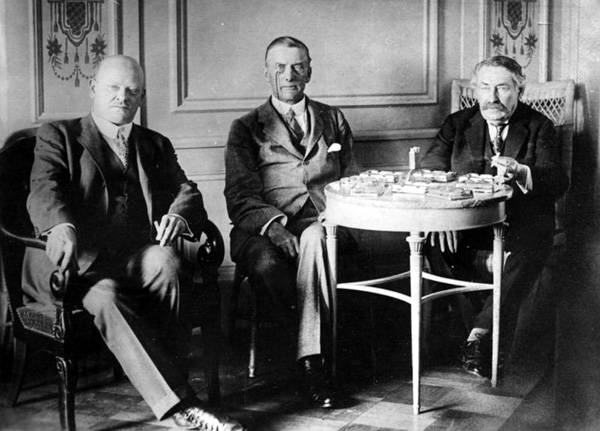
G. Stresemann, O. Chamberlain and A. Briand during the negotiations in Locarno
Locarno never brought about a permanent settlement of the Franco-German difficulties and did not lay the foundation for a lasting reconciliation. And it left many Germans and French dissatisfied. Moreover, it was meant that France had to submit to Great Britain. By yielding to the British demand to evacuate the Ruhr Valley and by inviting the British as guarantors of the Franco-German frontier, France completely abandoned any hope of a policy independent of Britain. Immediately after Locarno, both the British and the Americans began to put pressure on France to agree to a disarmament conference.
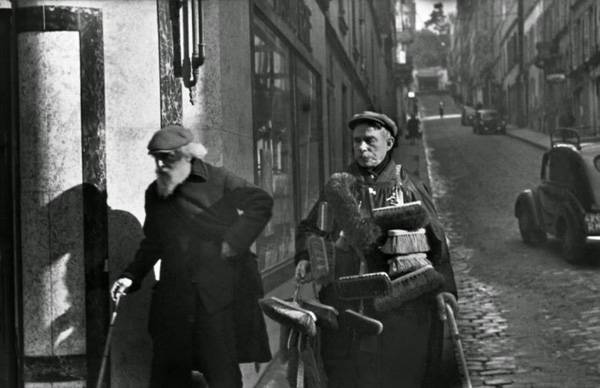
Broom seller in Montmartre, Paris, 1933
However, the crisis of 1929, which struck primarily Germany, nullified this fragile rapprochement. After the death of G. Stresemann, the political success of the Nazis, as well as the communists, who spoke on the topic of abandoning the Treaty of Versailles, marked the end of this Franco-German rapprochement.
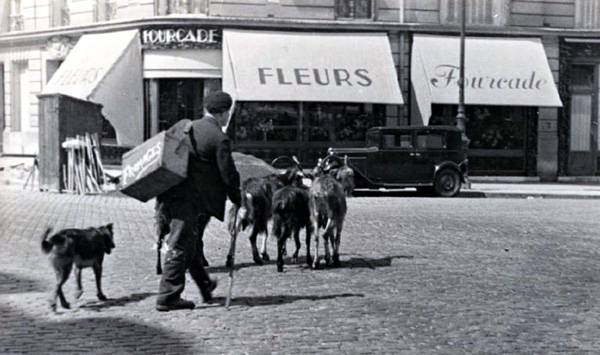
A cheese seller with his goats. Paris, 30s
In France 1930–1931 appear in retrospect as beautiful sunsets of a great power. The gold reserve of the Bank of France has never reached such a high level at the time of the devaluation of the British pound sterling. The country was able to celebrate the greatness of the colonial empire during the triumphal exhibition of 1931. This year, France was still able to successfully block the project of the Austro-German customs union (September 3), supported by the United States and Great Britain. And in 1932, French Prime Minister Tardieu resisted US-British pressure to disarm. But 1932 is also the moment when the crisis begins to hit France.
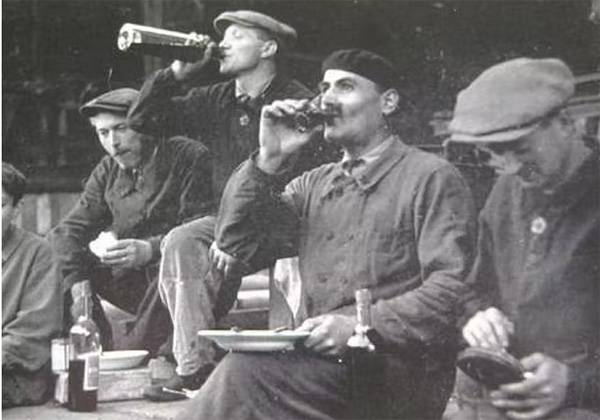
French workers
The country has been torn into politically irreconcilable clans, the extreme right and the extreme left are flourishing, governments are falling one after another. It was in this context, when the French government had just resigned, that Germany announced the re-occupation of the Rhineland (March 7, 1936).

The entry of German troops into the Rhineland (March 7, 1936)
And this event is a turning point. In London, this is seen as the end of the Versailles system, a system no one believed in anymore. For France, this is a strategic disaster! But here's another problem - allied Belgium, sensing the approach of war, denounces its military agreement with France in order to declare its neutrality (October 14, 1936). The northern border of France is open.
In March 1936, France, which had been trying since 1919 to reconcile the reality of a devastated country with its aspirations for security, found itself powerless against the rise of Germany. And on the same day in March 1936, France renounces its status as a great power. Indeed, maddened by the rearmament of Germany, she is no longer able to find the strength to react, and weakened by a protracted political crisis, she refuses responsibility for her foreign policy to Great Britain ...
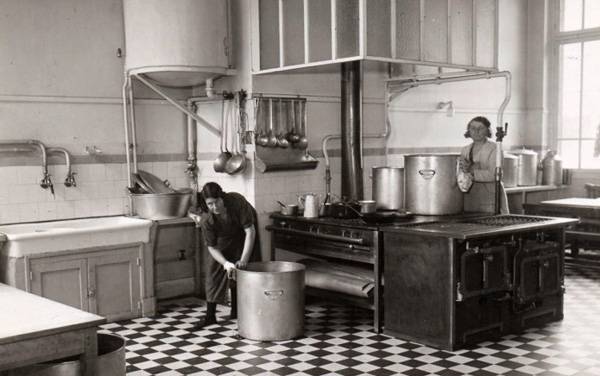
The kitchen of the Vitry-sur-Seine restaurant, Paris, 1930
Now French and British policy pursues the same goal - the protection of the Rhine. The conservative British governments (S. Baldwin and N. Chamberlain) consider the Soviet Union their main adversary, and in this capacity expect (and hope) a confrontation between two totalitarian enemies - the USSR and Germany. And the direction of Germany's ambitions to the East could contribute to this outcome.
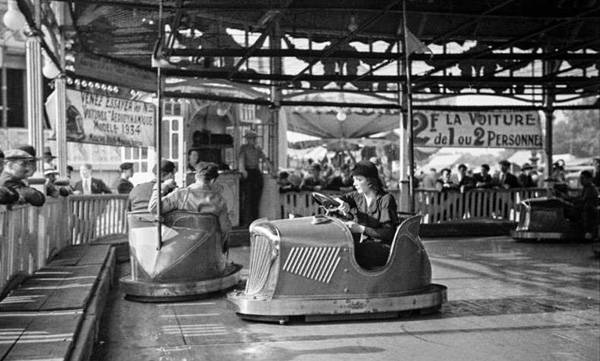
While the politicians are negotiating, the Parisians are having fun...
From 1936 to 1939, French foreign policy followed that of the British. Whether it's the Spanish Civil War, when the Popular Front government refuses to help the left-wing government fight a military uprising backed by Germany and Italy, the Anschluss of Austria, or the Sudeten Crisis, London is in charge.
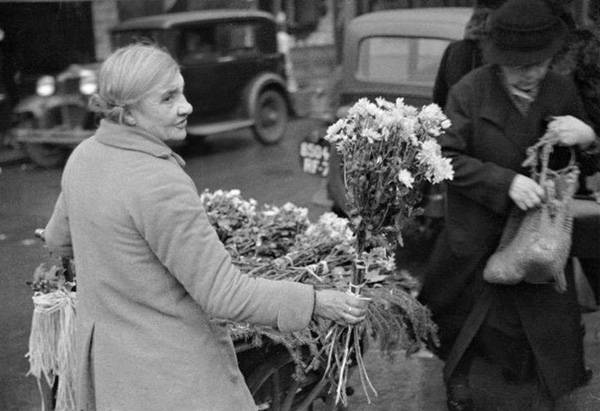
Flower seller in Paris, 1932
The policy of "appeasement" today causes heated debate, but also contempt. French foreign policy became a hostage to British foreign policy. This was the first but important step towards Munich, which became a symbol of unsuccessful politics. Nevertheless, it is also an unpleasant fact that this policy of the British and French authorities met with overwhelming public support, which was reflected after Munich in the triumph of N. Chamberlain on the balcony of Buckingham Palace and, to a lesser extent, when E. Daladier returned to Paris.
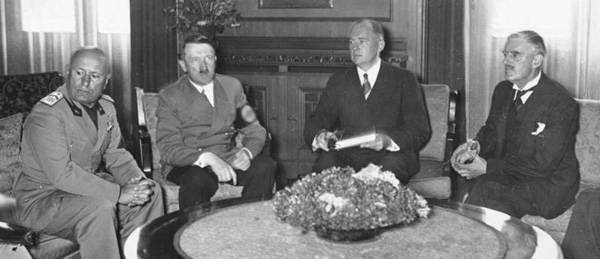
B. Mussolini, A. Hitler, E. Daladier and N. Chamberlain in Munich. 1938
After the shameful Munich, France lost not only the defensive advantage of 35 well-equipped Czechoslovak divisions, but also its alliance and prestige in Eastern Europe. Winston Churchill is said to have observed:
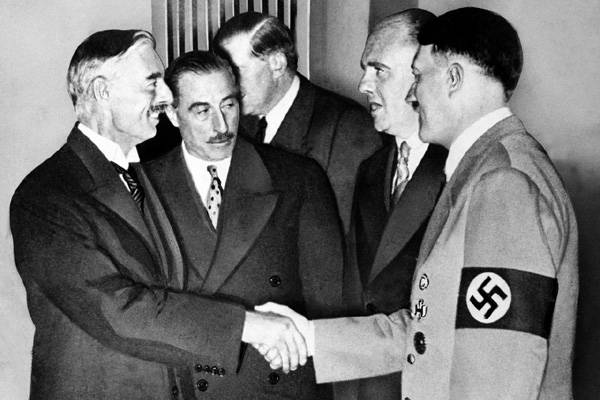
A. Hitler, E. Daladier and N. Chamberlain in Munich. 1938
In addition, "appeasement" had its own logic. In Britain, in addition to the fleet, since 1919 the armed forces have been neglected. The rearmament budget was adopted only in 1936 and 1937 and could not produce significant results until 1939. In the spring of 1938, Britain warned France that it could only deploy two divisions on the Continent in case of war with Germany.
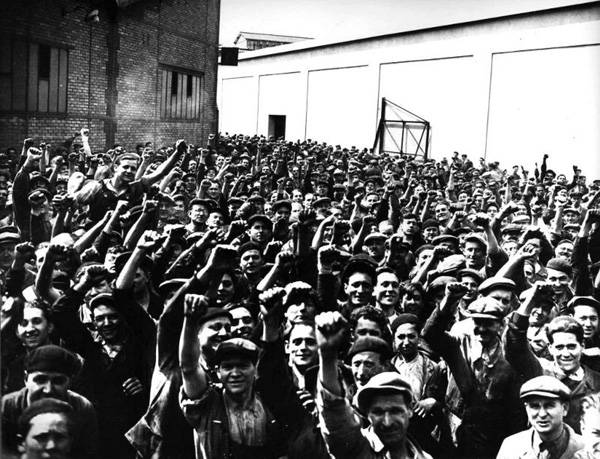
Rally of the Popular Front
And instead of confronting external dangers as a single nation, France from May 1936 to April 1938 was involved in internal problems. At a time when Germany was feverishly releasing day and night weapon, French industrial enterprises were put out of action due to labor disputes, strikes and capital flight from the country.
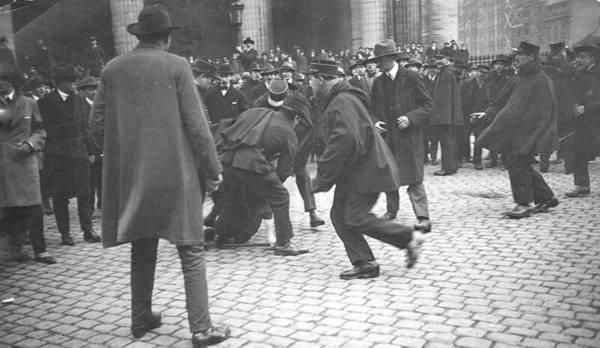
Riots in the streets of Paris
On April 29, 1938, the Franco-British alliance was concluded. It was the largest event of its kind since World War I. This alliance provided not only diplomatic cooperation, but also the creation of a single command of the British and French military, naval and air forces. The King and Queen of England visited Paris in mid-July 1938. In the weeks that followed, however, tensions in Europe continued to escalate.
Domestic politics of France
Unfortunately, in the period between the two wars, the people of France suffered from the shortcomings of the political system of the Third Republic. There were too many political parties or groups in the country, resulting in very unstable governments. Intrigues have become commonplace. There was corruption all around. This state of affairs persisted in France even after Hitler came to power in Germany in 1933 and began to heavily arm his country. The leaders of various political parties continued to fight among themselves and failed to prepare the country for war against Germany.

Paris in the 1930s
When the world faced an economic depression in 1929-1932, American President H. Hoover proposed a moratorium on the payment of reparations by Germany and all war debts by other countries, but this proposal did not meet with approval in France. This moratorium was only for one year, but the French feared that the payments would never be renewed again, and in fact they were completely stopped in 1932.
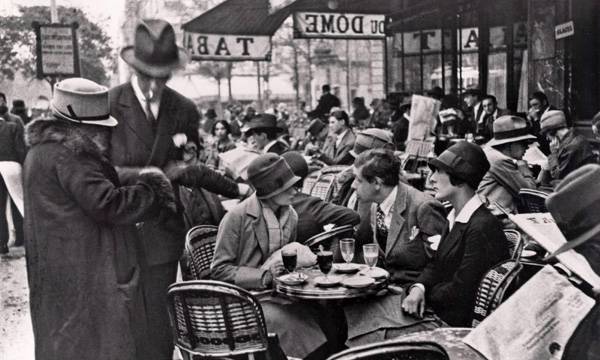
Carefree life in Paris in the 30s
Struck later than other states by the Great Depression, France since February 1934 has been plunging into a serious and protracted political crisis. The Third Republic turned out to be unable to respond to the political and economic challenges of the time, while Italy, Germany and the USSR offered new ways to solve political and economic problems.

Carefree life in Paris in the 30s
From 1932 to 1934, ministries alternated very frequently in France. Ultimately, Gaston Doumergue, who was President of France from 1924 to 1931, became prime minister in 1934. He tried to make some constitutional changes, but his proposals were rejected. He was replaced in this post in 1935 by Pierre Laval.
Laval was succeeded as prime minister by Léon Blum, a socialist and Jew who served as prime minister for a year.
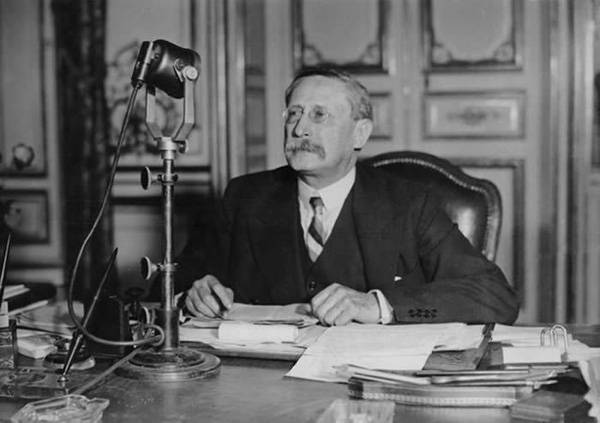
French Prime Minister Leon Blum
As a leader of the Socialists, Blum was the first French prime minister of Jewish origin. His ministers were mostly socialists and radicals, while the communists refused his insistent invitation to participate in the work of the government. At the very beginning, a wave of sit-ins swept through the country, expressing the hidden dissatisfaction of the workers with the previous government and their determination to achieve what they considered justice.
The new premier convinced the industrial elite to raise wages immediately, which ended the strike. He then pushed additional reforms through parliament: the 40-hour week, paid holidays, collective bargaining, and the nationalization of the Bank of France. However, some reform bills stalled in the Senate, which remained far more conservative than the socialist Blum.
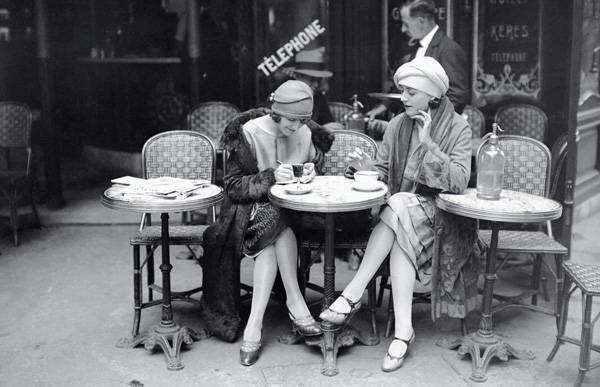
Parisian cafe
The social reforms carried out by Bloom's cabinet were very costly and controversial. Industrial production rose briefly and then slowed down again, unemployment began to creep up, rising prices compensated for rising wages, capital outflow began. When Blum tried to introduce currency controls, the French Senate overthrew his cabinet (June 1937).
He also retired. And his place was taken by E. Daladier, who was Prime Minister of France during the Munich Pact in September 1938.
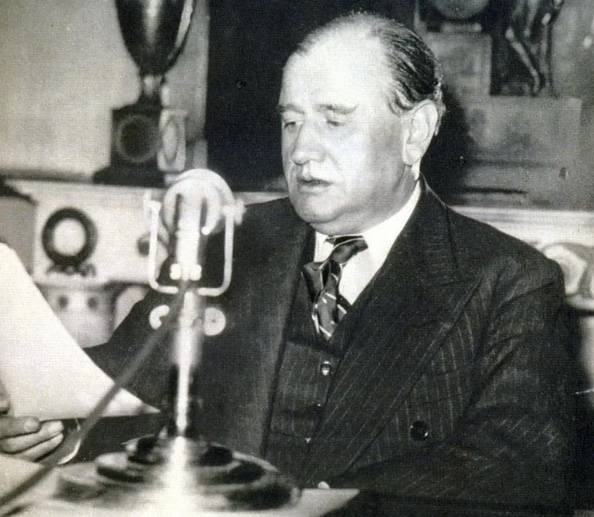
French Prime Minister E. Daladier
With the arrival of Daladier's government, France again returned to the usual pattern of unstable centrist coalitions with socialists in opposition. The radical Daladier was prime minister from 1938–1940, and his finance minister, Paul Reynaud, halted most of the reforms initiated by the Popular Front and sought to rebuild the economy with more orthodox policies targeting industrialists and bankers.

Newspaper seller. Paris, 1930s
From Clemenceau to Laval, French politicians paid the greatest attention to the security of their country. For all the French, both left and right, there was only one question - the security of France. For them, there was only one enemy, and that was Germany.
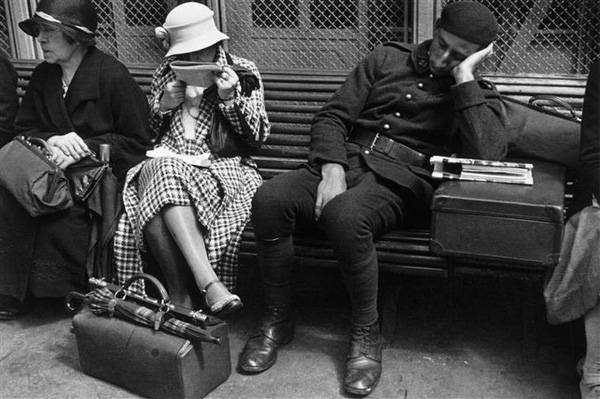
Paris. 1930s
The new 40-hour work week imposed by the government on the employer prevented the French from competing with the vigorously armed Germany and Italy, who were working overtime in their factories. In the autumn of 1937, a series of atrocities revealed the existence of a "Secret Committee for Revolutionary Action" that received arms and money from Germany and Italy to set up a fascist government in France. The exposure of the conspiracy was put on hold, as too many people from the army and big finance were involved in it.
The Germans, on the other hand, worked day and night and completed the construction of the Siegfried Line along their western border. Before the shameful Munich agreement on September 5, 1938, Daladier canceled all holidays in the army and aviation and ordered all reservists to occupy the Maginot Line. On September 10, 1938, 12 soldiers were mobilized in France. Despite these preparations, France surrendered at Munich...
The French government also did not help the Republican government of Spain against General Franco and his associates. In the name of peace and non-intervention, all arms supplies to Spain were banned, and the left-wing Prime Minister Blum called on the powers to accept general rules of non-intervention.
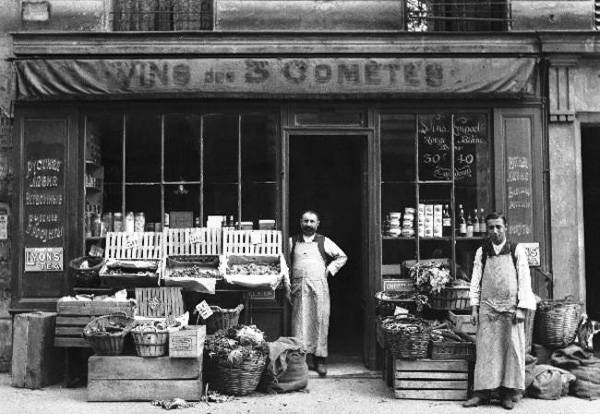
Paris. 1930s
Republican supporters in Spain protested and demanded that planes be sent to Spain, but Blum was unmoved. The decision was fatal. Franco's victory drove more nails into the coffin of France's eastern alliances and left France even more discredited and weakened. It also strengthened the position of pro-fascist elements in France, whose slogan was
Daladier, who became Prime Minister of France in April 1938, began to realize the seriousness of the situation, and he was given the right to administer decrees that dealt with France's finances. He succeeded in restoring confidence in the structure of the national economy by settling strikes, balancing the budget, and eliminating unemployment. An atmosphere of trust has been restored.
As a result, on March 19, 1939, the French government was given broad powers to issue decrees wherever necessary to respond to any emergency that threatened the security of France. France also experienced psychological and material changes. Munich came as a shock to them. France was unified in 1939, and by holding onto the Maginot Line, the people of France knew they had the most powerful army in Europe.
Daladier still managed to arouse enthusiasm among the inhabitants of France. On September 26, 1939, he ordered the dissolution of the Communist Party. When war broke out between Soviet Russia and Finland, Daladier Gamelin and Weygand prepared plans for war not against Germany, but against Soviet Russia.
Daladier resigned in March 1940 as prime minister, but returned as defense minister in Reynaud's new ministry.
Economy in the interwar period
Immediately in the post-war period, the government focused much of its energy on rebuilding the economy. An extensive program of rebuilding the war-torn areas was adopted, and the government had largely completed this task by 1925. And in order to somehow compensate for the loss of labor, immigration barriers were lowered, and two million foreign workers poured into the country.
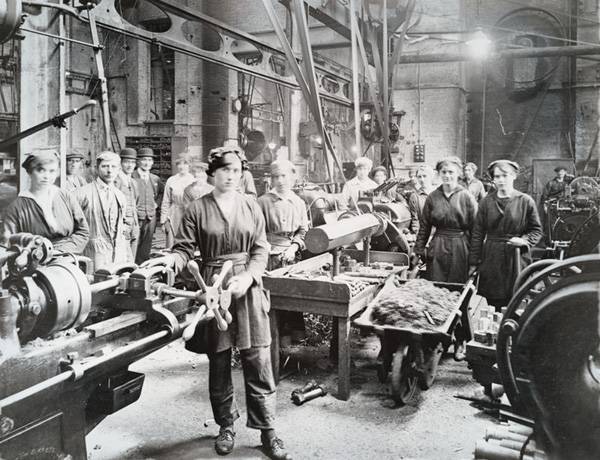
Women workers in a factory
By the end of the 1920s, the strengthening of the national financial system began to show strong economic growth in France, and by 1927 French industrial power was already three times higher than the pre-war level. And interestingly, for the first time in a long time in the French industry there is an acute shortage of workers, because of which France, as mentioned above, began to import labor from abroad. This was not the case in Europe recovering its strength after the war! The structure of employment has also changed. In the post-war years, the urban population of France for the first time exceeded the rural population.

But by 1935, when the Great Depression hit France, industrial production had fallen to 79% of its 1928 level and exports to 55%. Registered unemployment hovered at less than 500, but that figure obscures the fact that many of the city's jobs on family farms are owned by relatives. In addition, the French exported most of their production. Immigrant workers lost their work permits and were forced to return home. And only in 000-1938, when war was about to break out, France barely returned to its pre-crisis level.
Cultural and scientific achievements
During the period described, the French also showed their great creative potential in pure science and made major discoveries in various fields. Among the most notable figures were Louis Pasteur in medicine, Pierre and Marie Curie in physics, Marceline Berthelot in chemistry, Henri Poincaré in mathematics, and Jean-Martin Charcot in psychopathology. In the social sciences, the work of Gustave Le Bon and Émile Durkheim has had a wide and enduring influence.
The new scientific and cultural spirit had parallels in both political thought and activity: in the syndicalist doctrines of Georges Sorel, in the activism of a minority in the labor movement, and in the resurgent nationalism that had strongly affected many French youth in the years leading up to the outbreak of the Great War. It also brought a return to the church and emotional patriotism. In the visual arts, a new generation of painters abandoned both realism and impressionism. These so-called Post-Impressionists were driven by a strong subjectivism, a desire to express the artist's inner vision and deeper emotions in various ways.
French armed forces before the war
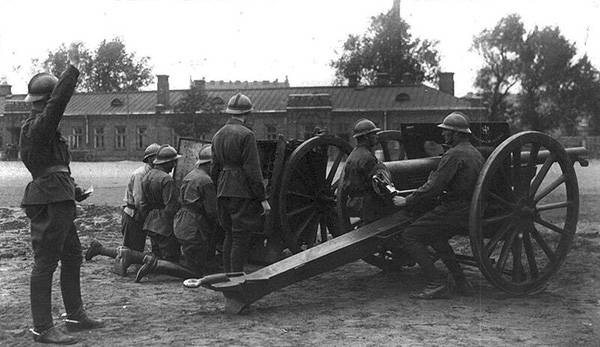
Calculation of the 75 mm gun
By 1939, the French army numbered about 900 men. In addition to this number of privates, the French had 000 million reservists with some military training. And the vulnerability on the northeastern flank, in connection with the declaration of neutrality by Belgium, forced the French to build after the war along the entire Franco-German border a powerful fortification zone: from the Ardennes in the south to the English Channel in the north, where significant financial resources were invested. The idea of its creation belonged to the then Minister of War Andre Maginot.
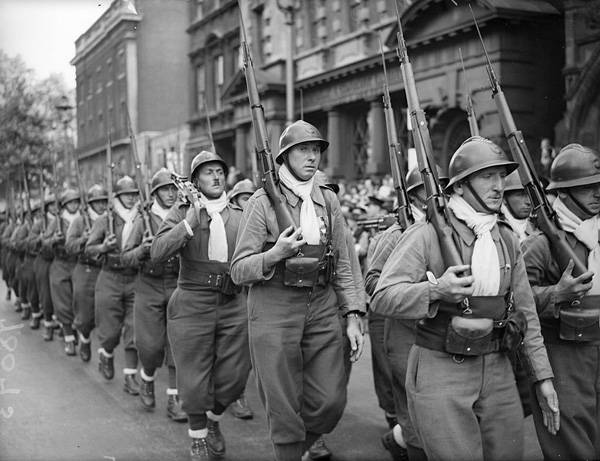
French army on parade
France had long been preparing for a possible German invasion. After seeing how the German troops made significant advances in attacks in 1870 and 1914, they built a large and supposedly impregnable line of defense in the period after the First World War. This defense included the Maginot Line, the natural features of the Ardennes forest, and the stationing of troops in prepared gun emplacements along the Belgian border.
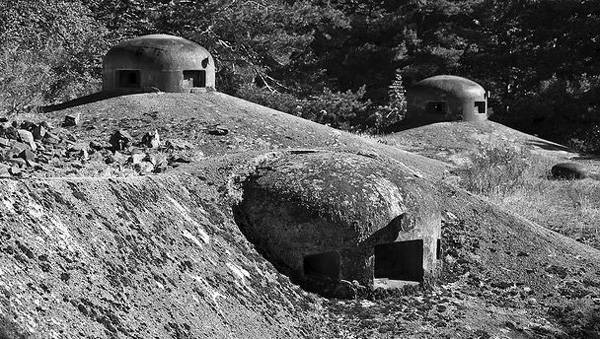
Fortifications of the Maginot Line
France, having a population almost half that of Germany, by the beginning of the war still managed to put up an army roughly comparable to the Wehrmacht.
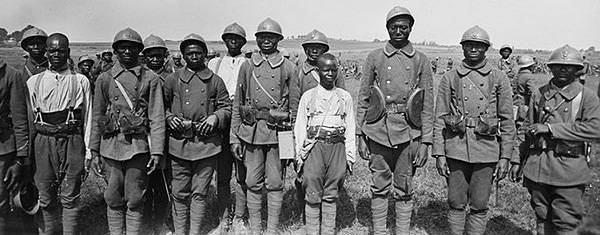
French colonial troops called up from Senegal
Line Maginot
The Maginot Line was an impressive series of defensive bunkers, gun emplacements and tank traps, stretching from the French border with Switzerland along the border with Germany to the Ardennes forest.
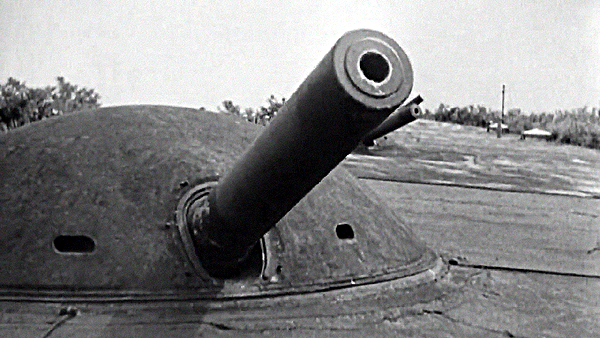
Armored bunker with a large caliber gun on the Maginot Line
The fortifications cut deep into the rock here were designed to prevent tanks from moving across the border. The bunkers were heavily fortified and could not be breached by Luftwaffe bombing, and had automatic weapons built into them that would have made a frontal infantry attack suicidal.
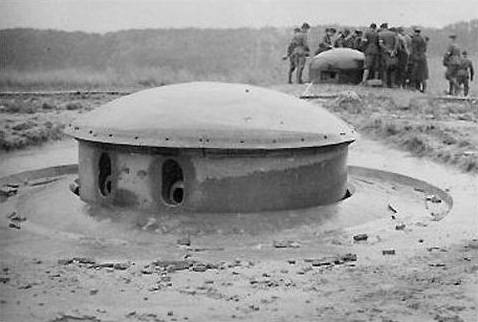
Turret with 135 mm gun
In 1939–1940 French strategists believed that the only attack options available to German forces were to attack the Maginot Line or invade through Belgium, as happened in 1914.
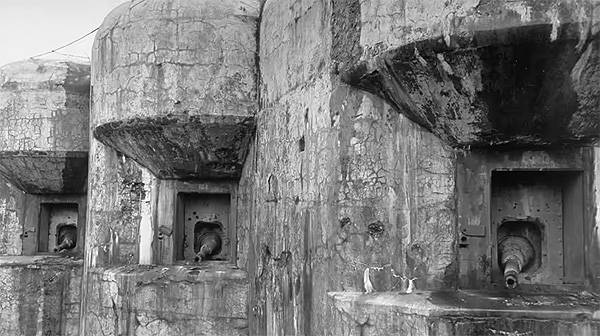
Triple casemate with 75 mm guns
For this, forces were deployed in two directions. A large number of soldiers stood guard in and around the Maginot Line, while the rest of the French troops were posted in northern France in defensive positions close to the Belgian border.
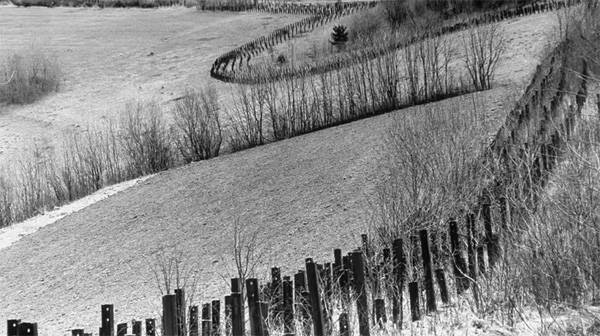
Vertically standing rails for anti-tank protection
Limited forces were transferred to the Ardennes region, as the strategists felt that the density of trees and semi-mountainous terrain made the area too difficult for a coordinated assault with tanks.
The French reserve was positioned to the north with the intention of moving out to support troops facing German forces along the Belgian frontier.
Air Force
By the beginning of the war, the French Air Force had 826 fighters and 250 bombers. This followed a move to increase the number of fighters made by the French government in 1938. This force was supported by 350 RAF aircraft that were sent to aid France in the event of a war with Germany. Combat missions against the Luftwaffe prior to the German invasion of France reduced the number of combat fighters available to 740.
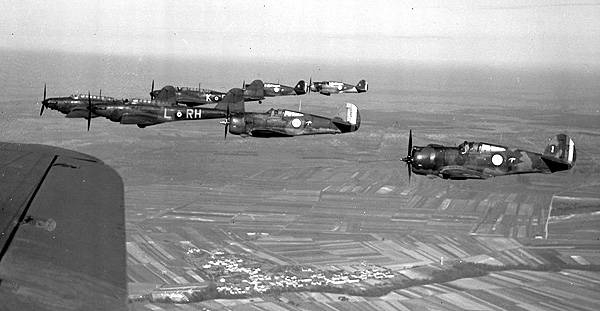
French fighters
All French fighters had a lower speed than the German Me-109E, but were also more maneuverable. The most numerous fighter type on the French side was the Morane-Saulnier MS. 406, although by the beginning of the war it was already considered obsolete.
In addition, many air force theorists passionately believed in the strategic theory of the Italian General Giulio Douet (the so-called Douhet Douhet), which called for the destruction of the economic power of the enemy through massive bombing and the destruction of his infrastructure. On the other hand, the top leadership of the French army wanted the air force to serve as an auxiliary package rather than an independent unit...
During a visit to a military conference in London, the Chief of Staff of the French Air Force, Joseph Vuillemin, bluntly described the situation of the French Air Force as follows:
This harsh statement shocked all British commanders. They were well aware of Germany's quantitative successes, but believed that once the fighting began, the French would be able to contain Germany in the air.
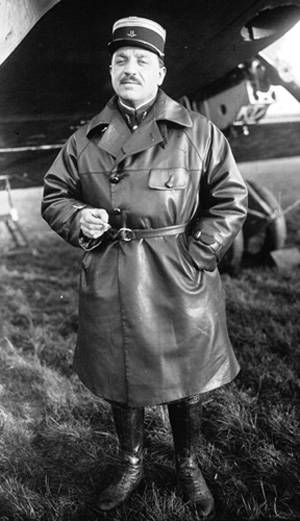
French Air Force Chief of Staff Joseph (1883–1963)
Later that year, Joseph Vuyémins sent Prime Minister Edouard Daladier a personal letter reiterating that in the event of war, Germany would destroy the country.
Navy
The French navy at the end of the First World War was of considerable size, but after the signing of the Washington agreement in 1922 to limit the tonnage of the naval forces, it was sharply reduced, eventually forming a relatively small, but still quite strong fleet, though , with some of its inherent limitations that would later hinder its ability in World War II.

Submarine Surcouf
After World War I, the French navy focused on producing fast, heavily armed but lightly armored cruisers that could defend the coast of France.
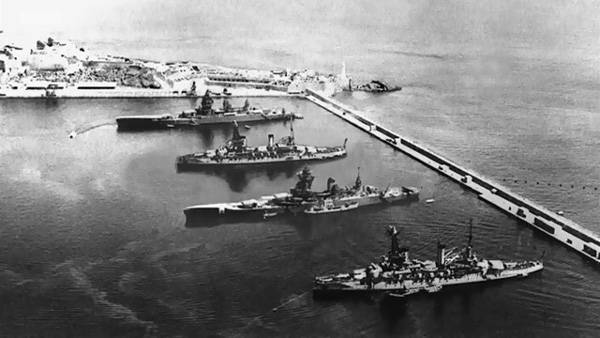
Adolf Hitler came to power and began to build up the German military, the French government in response began to invest large sums of money in the modernization of its navy. This included the construction of large battleships such as Dunkirk, Strasbourg, Richelieu and Jean Bart.
And by the beginning of World War II, the French fleet was a powerful force. Between 1926 and 1939 two battlecruisers, seven heavy cruisers and 12 light cruisers were built. Their large battleships were either new or recently upgraded. He also had 71 destroyers and 76 submarines.
But the main weakness of the French fleet was the lack of aircraft carriers.
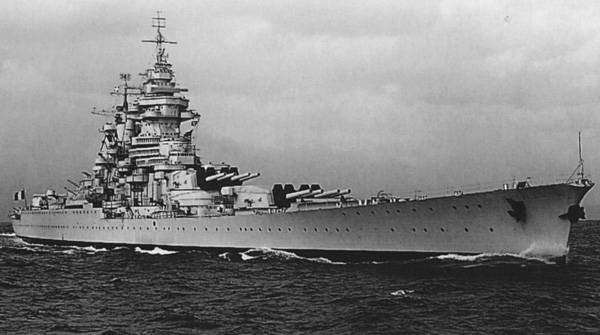
Battleship "Richelieu"
Let's try to summarize...
After a visit to France in early January 1940, Sir Edmund Ironside, Chief of the British Imperial General Staff, summarized his impressions of the French army as follows:
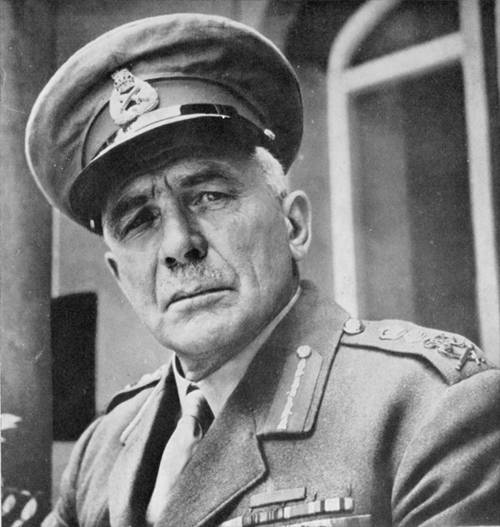
Edmund Ironside
These were the eloquent words of a top British commander before the outbreak of World War II.
Now it's time to put together the elements of these significant pre-war years, which were briefly described above:
1. France was a democratic state, and in a democratic state the government listens to the will of its people. Public opinion in France was deeply pacifist, and she looked with horror at the prospect of a return to the unbearable suffering she had endured in the trenches. The same opinion was on the other side of the English Channel. Daladier, who pursued a conciliatory policy, was himself a veteran of Verdun, and he did not forget what he saw and experienced.
2. The mass media predicted massive aerial bombardments of cities, especially after the tragedy of Guernica (German air raid on the Spanish city of Guernica during the civil war on April 26, 1937).
3. Public opinion was divided over deep political tensions that overshadowed international issues. The extreme right movements admired B. Mussolini, supported F. Franco and pandered to A. Hitler. The Communist Party faithfully followed the instructions of comrade. Stalin even when they weakened the resistance to Nazism. The Third Republic seemed exhausted. Fear of a German invasion was replaced by fear of civil war. The right, formerly nationalists, became pacifists out of hatred and fear of communism, while the left was anti-fascist but still marked by the horrors of war.
4. A state cannot have a foreign policy that is inconsistent with its military strategy. The construction of the Maginot Line has always been criticized.
5. The Belgian betrayal was unpredictable.
6. Alliances with the countries of the Little Entente did not fit the French strategy, an army that hides behind the Maginot Line and has neither the intention nor the ability to save Poland. France had neither the means nor the desire to fulfill the provisions of its treaty of alliance with the countries of Eastern Europe.
7. The personality of Adolf Hitler became a decisive factor that no one could have predicted. Already at the end of 1938, he realized the wildest dreams of the German nationalists - at home he revived the economy and crushed the democratic parties, and in foreign policy he integrated ten million Germans into the Reich without firing a shot and made his country the first European power whose hegemony could be exercised from Denmark to Romania.
8. American isolationism. The United States hastily withdrew from the European theater without ratifying the Treaty of Versailles, without signing an alliance treaty with France, and without joining the League of Nations. And the post-war period was marked by bitter quarrels with their former allies, who were accused of not paying their war debts.
When the danger posed by Hitler became apparent, the US Congress voted several neutrality laws prohibiting any direct or indirect assistance to the belligerent, that is, France and Great Britain. And it is not surprising that Roosevelt did not respond to the desperate call for help from French Prime Minister P. Reynaud, sent to him in June 1940.
Thus, there were practically no prospects for defending France from Germany. The French cabinet fled from Paris, first to Tours and then to Bordeaux. P. Reynaud turned to America for immediate help, but to no avail. He eventually resigned and was succeeded by Marshal Petain, who made peace with Germany.
But that's a topic for another article...
Information